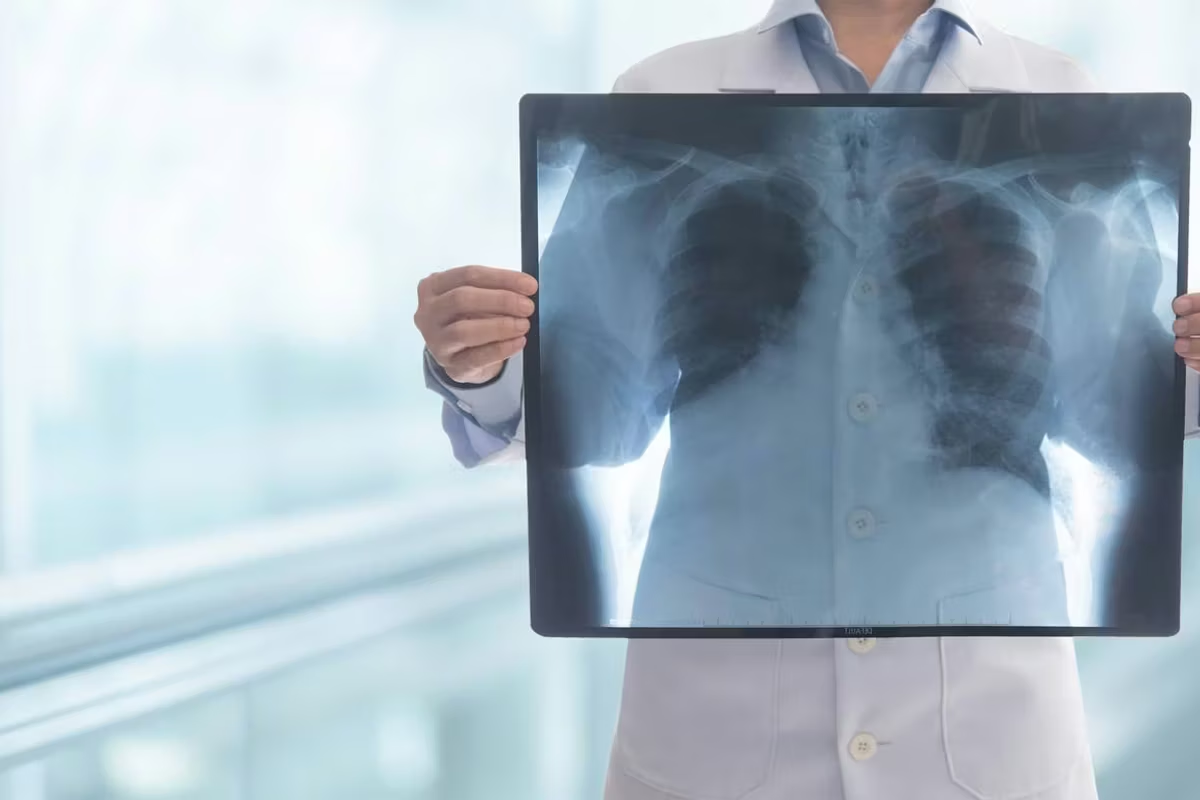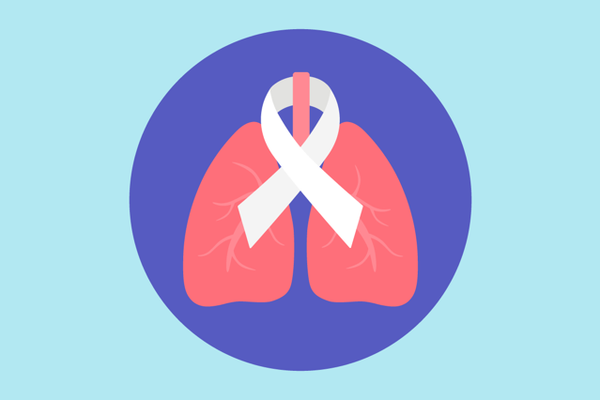November is Lung Cancer Awareness Month.
Lung cancer has been the leading cause of cancer death in the United States for many years. And it accounts for about 1 in 5 of all cancer deaths throughout the country. In fact, more Americans die from lung cancer than from breast, prostate and colon cancer combined.
The American Cancer Society (ACS) estimates that about 125,000 Americans will die from lung cancer this year — and about 60,000 of those will be women.
Smoking is still the leading cause of lung cancer, with the ACS estimating that tobacco use causes about 8 out of 10 lung cancer cases.
But there’s some good news, too. New cases of lung cancer have decreased by an average of 2.4% each year according to the latest statistics. And death rates have fallen an average of 4.2% per year over the last decade.
Anti-smoking efforts have helped many Americans quit smoking or, better yet, never start. And lung cancer treatments have become much more effective over time.
One more factor helps account for these improvements: lung cancer screening for people at high risk. Researchers estimate that lung cancer screening could reduce the lung cancer death rate by up to 20%.
Here are some answers to frequently asked questions about lung cancer screening.
What is lung cancer screening?
In general, healthcare providers (HCPs) use screening tests to check for disease in healthy people who don’t have symptoms. The goal of screening is to find disease in its early stages, when treatment is most likely to be effective.
Lung cancer screening consists of a low-dose computed tomography (LDCT) scan of the lungs to look for lung cancer. This screening is currently recommended only for people at high risk for developing lung cancer.
To do this fast and painless test, you lie on a table that moves through a CT scanner to create clear images of your lungs.
Who should get screened?
The U.S. Preventive Services Task Force (USPSTF), a group that reviews scientific evidence to make patient-care recommendations, issued their most current recommendations in 2021. They recommend annual lung cancer screening for people who meet all of these requirements:
- Are between the ages of 50 and 80
- Have a smoking history of at least 20 pack years (the number of cigarette packs smoked per day multiplied by the number of years you’ve smoked)
- Still smoke or have quit smoking within the past 15 years
Compared to previous versions, the USPSTF’s current guidelines lowered the age to start screening from 55 to 50 and dropped the minimum number of pack years from 30 to 20.
These changes significantly increased the number of women — especially Black women — who are considered high risk for lung cancer.
The ACS also has a lung cancer screening guideline. It has one important difference from the USPSTF guideline: The ACS recommends yearly scans regardless of how long ago you stopped smoking.
What is a “pack year”?
Scientists who study tobacco use the term “pack year” to measure how much people have smoked over time. Multiply the number of cigarette packs you've smoked per day by the number of years you've smoked. That’s your pack year.
If you smoked two packs a day for 10 years, that’s 20 pack years, which means you’re eligible for lung cancer screening. If you smoked one pack a day for 15 years, that’s 15 pack years and below the 20 pack-year threshold for screening.
Why can’t we screen everyone for lung cancer, even people who are not at high risk?
All screening tests carry the potential for both benefits and risks. That’s why you and your HCP should discuss your personal history and whether you should be screened for lung cancer. Shared decision-making means reviewing this information and creating a plan for your care together.
It’s important to note that smoking is currently the only risk factor for lung cancer that current screening guidelines consider.
Other potential causes of lung cancer like air pollution, radon exposure, secondhand smoke and genetic mutations are not included in today’s guidelines. Scientists are studying whether personalized screening approaches would identify more cases of lung cancer and potentially save more lives.
Read: How Shared Decision-Making Can Lead to Better Healthcare >>
What are the benefits of lung cancer screening?
The main benefit of lung cancer screening is the possibility of preventing death from lung cancer by catching it as soon as possible.
The American Lung Association (ALA) reports that lung cancer screening finds over half of lung cancer cases at an early stage when it’s more treatable.
One study found that only about 1 in 4 cases of lung cancers were found at an early stage without screening.
What are the risks of lung cancer screening?
Lung cancer screening is unlikely to miss cancer, but it can happen. This is known as a false negative result.
Test results that suggest a person has cancer when they don’t are called false positives. The ALA estimates that about 12-14% of a person’s first lung cancer screenings will have a false positive. But only about 6% of repeat scans show false positives because HCPs compare scans over time to look for changes.
One potential con to lung cancer screening is that it may also identify cancers that may never have caused harm if left alone. Rarely, lung cancers grow slowly and without causing symptoms. But any kind of lung cancer diagnosis means your HCP will likely recommend treatment. And treating cancer that is unlikely to harm you is called overtreatment.
Screening with LDCT also involves the use of low-dose radiation to capture images of your body. Over time, this radiation can cause health problems. But it’s important to know that LDCTs use much less radiation than standard CT scans.
What are some barriers to getting lung cancer screening?
According to the ALA’s State of Lung Cancer Report, only 18% of eligible people received lung cancer screening in 2022.
Various real-world barriers may discourage some eligible people from getting lung cancer screening. For example, some high-risk people may not know that they are eligible for lung cancer screening.
Some longtime or former smokers may also hold back from screening because of anxiety that they might have lung cancer or worries about the stigma facing people with lung cancer, that they somehow deserve to be sick.
Transportation issues and physical access to LDCT screening centers can also keep people from getting screened. This is especially true for people who live in rural communities.
If you’re eligible for lung cancer screening, cost is unlikely to be a barrier. Medicare and most private insurance plans cover lung cancer screening for eligible people at 100%. That means you likely won’t have any out-of-pocket cost — just like mammograms and other screening tests. However, any additional testing and follow-up scans between screenings may have a cost, such as a co-pay or deductible.
This educational resource was created with support from Merck.
- Lung Cancer Symptoms ›
- Women Who Have Never Smoked Can Get Lung Cancer ›
- Early Screening for Lung Cancer Can Be a Lifesaver ›
- The Struggle Is Real: Black Women and Lung Cancer ›
- Lung Cancer Screening 101 ›






